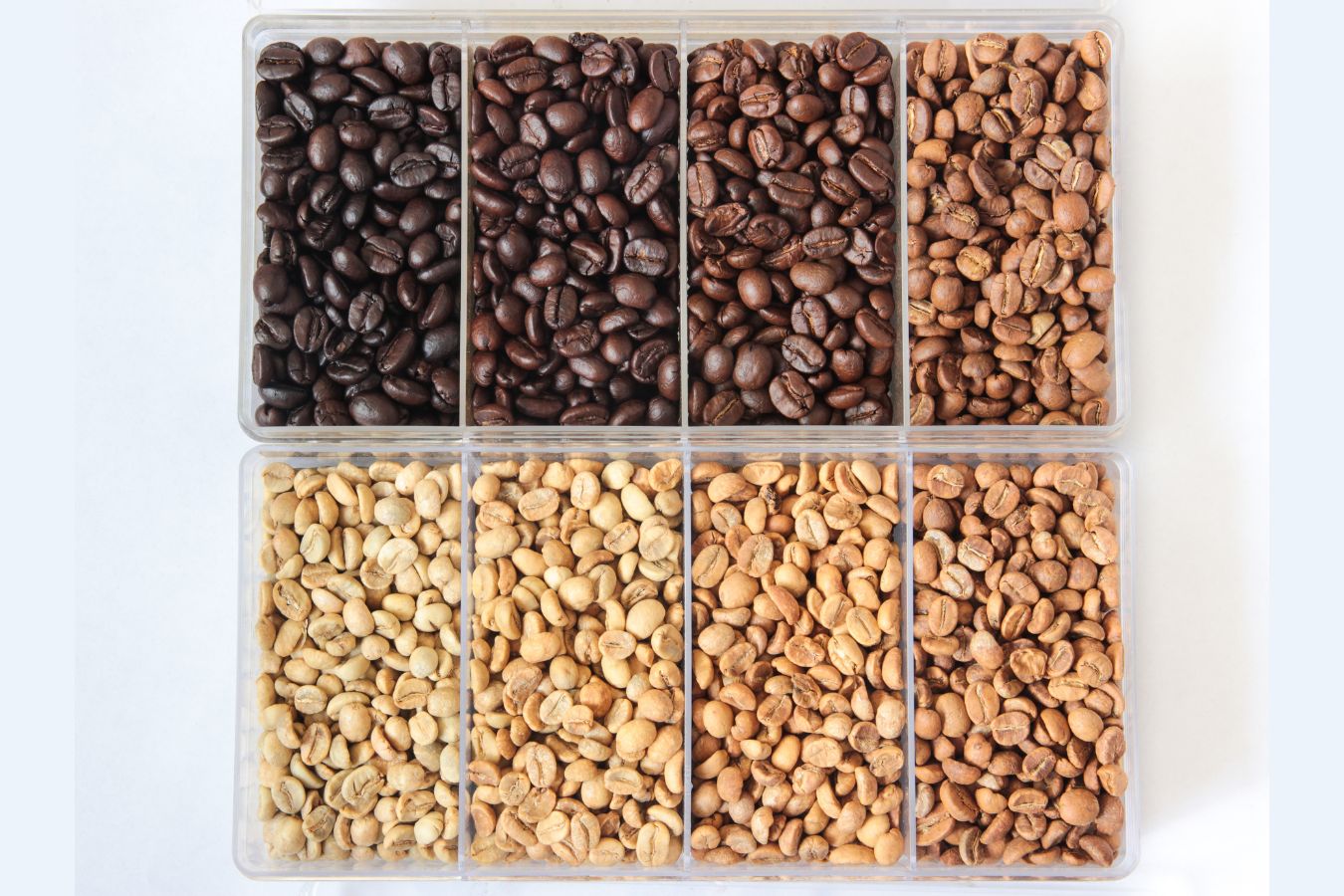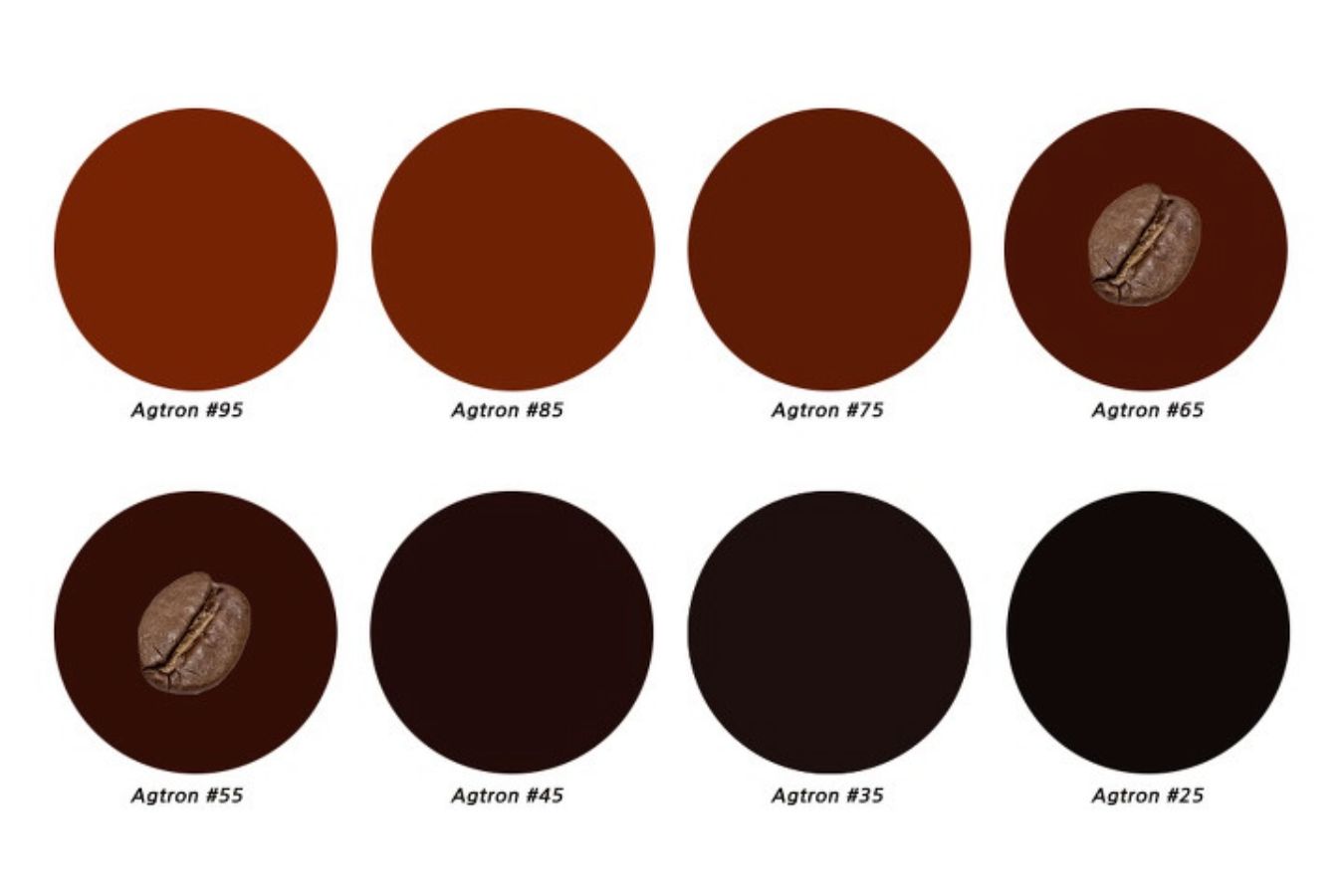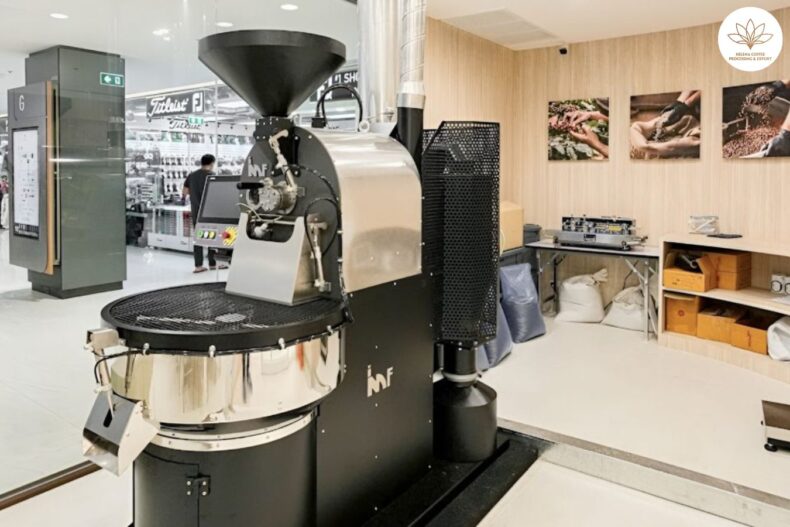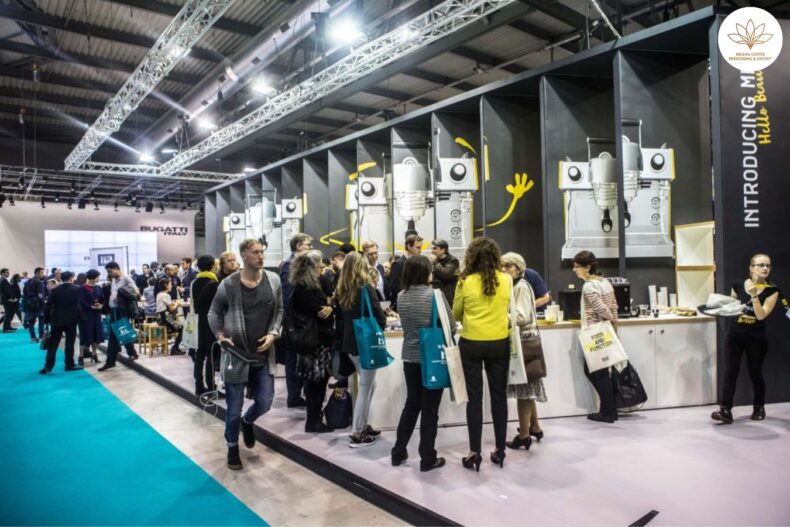
How To Know The Coffee Roasting Level? Coffee roasting is a heating procedure that transforms “green coffee beans” into “ripe coffee” for brewing and drinking. After the roasting process, new flavor and taste compounds accumulate in the bean, giving it a green color and an odor similar to beans or grass.
Color Scale Agtron
The Agtron scale is used to analyze the color of coffee beans to determine the degree of roasting. The Agtron colorimeter works by shining ultraviolet light on a sample of ground or whole beans, then measuring the level of reflection to assess the color, resulting in a value representing the degree of roasting.

The M-Basic (or Commercial Scale) and Gourmet Scale (similar to a ruler with centimeters and inches) scales of an Agtron colorimeter have been devised to fulfill the demands of each individual. Roasters of various sizes:
Commercial Scale: The original roasting scale, from 0 to 100 (dark to light), was created for commercial roasters. Many additional measurement instruments have been used in commercials as a major indicator of coffee bean growth throughout time. Gourmet Scale: 0 to 133, intended for specialized roasters who want a higher roasting level than the commercial scale.
Both scales use the same zero reference point: pure carbon with no odor or flavor. Commercial 100.0 and 133.0 are at the top of the spectrum, with Gourmet being the equivalent of green coffee. The roasting levels are listed below according to the SCA’s Agtron Gourmet scale.
- Light: > 70 lumens
- Medium Light: 61-70;
- Medium: 51-60;
- Medium Dark: 41-50;
- Medium Light: 61-70
35-40 ; - Very Dark: 25-34 ;
- Dark: 35-40 ;
- Very Dark: 25-34 ;
- Dark: 35-40
The sound of a ‘crack’
Aside from Agntron, roasters utilize a combination of temperature, smell, color, and sound to monitor and identify the roasting process. There are two critical temperature thresholds known as “cracks” in them. The bursting of the beans causes the coffee to make a sound at a temperature of around 196°C. The “first crack,” which marks the start of the “light roast,” occurs at this moment. A considerable portion of the coffee’s moisture has drained at the first crack, causing the beans to grow in size.
When the coffee heats 224°C, it makes a “second crack,” a sound that suggests the coffee’s structure is beginning to break down. If the coffee can roast any longer, it will quickly carbonize and finally burn.
The coffee roasting process is a complicated process that involves carefully applying heat to coffee seeds in order to transform the basic stuff of life contained within each seed – sugars, proteins, acids, and so on – into delicious aromas of roasted nuts, malts, chocolate, fruit, berries, flowers, and other flavors. We treat each coffee with great care, combining rigorous data logging with intuition and expertise to achieve a balanced flavor.
The roast profile and the consistency of the roast Giesen
Roast profiles, often known as roast profiles, are a type of roast. This is a compilation of various facts related to the roasting of coffee beans. Input data such as geographic location, cultivation height, origin–kind, processing technique, moisture, grain density, and desired taste attributes… are used to calculate process variables such as machine temperature, grain temperature, convection speed, and moisture content.

Roast profiles will be recorded manually or using computer software connected to the transducers inside the roaster based on input data and settings that occur during roasting. As a result, the Roast profile will provide a starting point for achieving the desired flavor and serve as the foundation for maintaining consistent quality on an industrial scale.
In general, coffee roasters recognize roast levels in a variety of ways. There are no right or wrong answers when it comes to roasting coffee. Importantly, after roasting, good coffee beans will produce delicious cups of coffee; on the other hand, they will be a waste.
When there are so many resources and terminologies for roasting and roast profiles, determining the roast degree of your coffee can be a daunting task. Here, we’ll do our best to provide you with as many options for determining your roast level as possible. Don’t be afraid to experiment; the more you roast, the better you’ll become at estimating roast levels and dialing in profiles consistently.
Before we begin, a disclaimer: it’s important to give credit where credit is due, therefore we wanted to make it clear that all of these images are from this Wikipedia article (all image credits to Dan Bollinger).
While Wikipedia isn’t usually a dependable source of information, these images were bang on and saved us a lot of time and effort (and potentially wasted coffees, nobody wants to drink charcoal).
While the information in the Wikipedia article is informative and, for the most part, correct, please feel free to use it as a reference in your own excursions. To view larger images from the original story, click on the images.
What effect does the Coffee Roasting Level have?
However, there are additional things that influence the taste of your chosen beverage than the type of drink. One of them is the kind of bean roast utilized in the preparation.
The flavor of the beverage you create or buy will be heavily influenced by the roast you choose. We’ll go over the three basic varieties of roasts in this article: light, medium, and dark roasts. We’ll go over how different coffee roasts alter the flavor of your drink. Check out our blog ‘The basics of roasting coffee beans” if you want to learn more about the roasting process in general.


